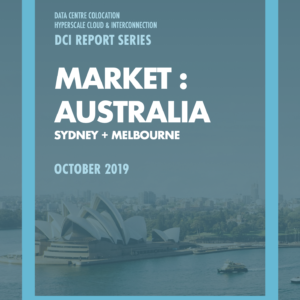Description
The Japan (Tokyo & Osaka) DCI Report is an in-depth 113-page study that measures the aggregate size and 5-year growth projections of the Tokyo & Osaka data centre colocation, hyperscale cloud and interconnection market from a revenue generation standpoint and supply/demand utilization from a space and power perspective.
There are data centre provider leaderboards that distinguish between revenue, space and power capacity in Tokyo & Osaka along with sub-regional analysis that further splits the Tokyo & Osaka markets into specific sub-regions.
Read the PDF preview HERE.
Executive Summary
The Tokyo and Osaka data centre markets continue to grow and expand despite the inherent constraints and challenges in power infrastructure with hyperscale driving the demand profile and domestic enterprise workloads being a source of steady demand. The Tokyo market was worth USD $3.2b in 2023 and is projected to grow 21% y/y to USD $3.8b in 2024. Osaka has shifted from a DR-oriented location to a core cloud region for a growing group of hyperscalers due to its central location in Japan and the ability to serve both Central and West Japan. The Osaka market was valued at USD $701m in 2023 and projected to grow 21% y/y to USD $849m in 2024. The projected five-year CAGR for Tokyo is 12% and for Osaka it is 19%.
Hyperscale cloud continues to be at the centre of all things related to data centres in Japan. The hyperscale-oriented portion of the market, currently 57% in Tokyo, is expected to account for 75% by 2030. Hyperscale colocation is expected to grow 37% y/y in 2024 and is expected to be the primary driver of growth in the Tokyo and Osaka markets. The five-year CAGR for hyperscale colocation in Tokyo is projected to come in at 17%. Osaka is seeing a similar story play out. Hyperscale will constitute 59% of the market this year and account for over 80% by 2030. Osaka’s hyperscale colocation market grew 48% y/y last year and is projected to grow 33% y/y this year with a forward-looking five-year CAGR of 27%.
The demand profile in Japan is healthy, and the majority of hyperscale platforms have opted to go with a leasing strategy for the lion’s share of their capacity requirements either through multi-tenant colocation leasing or dedicated built-to-suit data centres. The only exception to this is Google which recently brought online a self-build data centre in East Tokyo’s Inzai region. Our previous report noted the impact of real estate developers altering the competitive fabric of both the Tokyo and Osaka markets and this has materialized in 2024 and is expected to be a new normal moving forward for the Japan market. Built-to-suit data centre builds by both colocation providers and real estate developers are now a common theme in the Japan market and this is expected to continue over the next five years as campus sizes get larger and larger.
On the enterprise side, which is increasingly becoming a more underserved part of the market as most providers have pivoted heavily to serve larger hyperscale cloud and AI requirements, is continuing to see steady demand. Interconnectionfocused providers have had a distinct advantage as enterprise customers have migrated more workloads to cloud and mostly settled on some kind of hybrid architecture.
Perhaps the most important question that this report hopes to address from a data-centric perspective is the impact of AI demand on the Japan data centre market. While still early days in terms of AI demand materializing in the the Japan market, there are already signs that hyperscale cloud platforms are preparing to deploy an increasing number of GPU capacity in country over the next few years.
Japan demonstrates all of the obvious positive demographic characteristics and it is not likely a domestic cloud will be built to offset adoption of major public cloud platforms originating from the US. Enterprise adoption of cloud appears to have reached an inflection point and is now accelerating.
Of course, there are challenges. The most concerning are the ones around how that translates to build costs. There is a multi-year backlog and ongoing delays in power substation infrastructure build-outs, combined with labour shortage issues in the greater Tokyo market. This has caused a spike in construction costs and resulted in longer time frames for bringing new data centres builds online.
This report is an excellent resource for any service provider, investor or enterprise end user looking to understand and project the data centre and interconnection market in Tokyo and Osaka or find a service provider.
Download PDF preview
Read the PDF report preview HERE






